In the rapidly evolving world of technology, one tool is making waves and transforming the landscape: LangChain. This powerful tool is revolutionizing the way developers build applications using large language models. It's not just a tool; it's a game-changer, a catalyst for innovation, and a harbinger of a new era in technology.
Today, we're going to delve deeper into the world of LangChain, exploring five innovative projects that are pushing the boundaries of what's possible.
What's Inside:
- Discover how LangChain is being used to revolutionize healthcare through optimal action prediction during patient-doctor interactions.
- Learn how LangChain is transforming content analysis by extracting precise information from hours of video content in seconds.
- See how LangChain, in conjunction with the Serper API, is making sense of the vast sea of information on the internet by summarizing news search results.
- Understand how LangChain is reshaping the HR function by providing support to new hires and reducing repetitive tasks for HR through an AI HR Agent.
- Explore how LangChain is being used to create complex, interactive simulations with multiple agents who collaborate to achieve predefined goals.
These projects are not just applications; they're a testament to the potential of LangChain in reshaping the digital world. So, fasten your seatbelts and get ready for an exciting journey into the future of applications built on Large Language Models.
What Is LangChain?

LangChain is a cutting-edge framework devised for applications that harness the prowess of language models. It offers a unique blend of data-awareness, allowing seamless integration with varied data sources and agentic functionality, enabling dynamic interactions with the surrounding environment.
At its core, LangChain boasts modular components for efficient language model operations and off-the-shelf chains designed for specific tasks. These attributes make it a versatile tool, catering to both immediate deployment needs and complex, customized applications.
If you want to go deeper on all this (in a non-technical way), check out this super handy Ultimate Guide to LangChain resource.
Five Innovative Projects Harnessing the Power of Large Language Models (LLS) and LangChain
Now that we've established what LangChain is and its capabilities let's dive into the heart of our discussion. The following sections will take you on a journey through five diverse projects that are using LangChain to disrupt their respective fields. Each of these projects showcases the remarkable versatility and robustness of LangChain, pushing the boundaries of language model applications and redefining what's possible. Let's explore each one.
Project 1: Dr. Claude - Revolutionizing Healthcare with Langchain

Our first stop is Dr. Claude, a project that's leveraging the power of LangChain to transform healthcare. Dr. Claude uses LangChain to build a Monte Carlo Tree Search (MCTS) for optimal action prediction during patient-doctor interactions. This isn't just a technical marvel; it's a potential game-changer for healthcare. By improving the decision-making process in patient-doctor interactions, Dr. Claude could revolutionize the way we approach healthcare, making it more efficient, effective, and patient-centric powered by cutting-edge medical practice software.
What makes Dr. Claude so special?
It's the way it harnesses the power of LangChain. By using LangChain to build a Monte Carlo Tree Search (MCTS), Dr. Claude is able to predict the optimal actions during patient-doctor interactions.
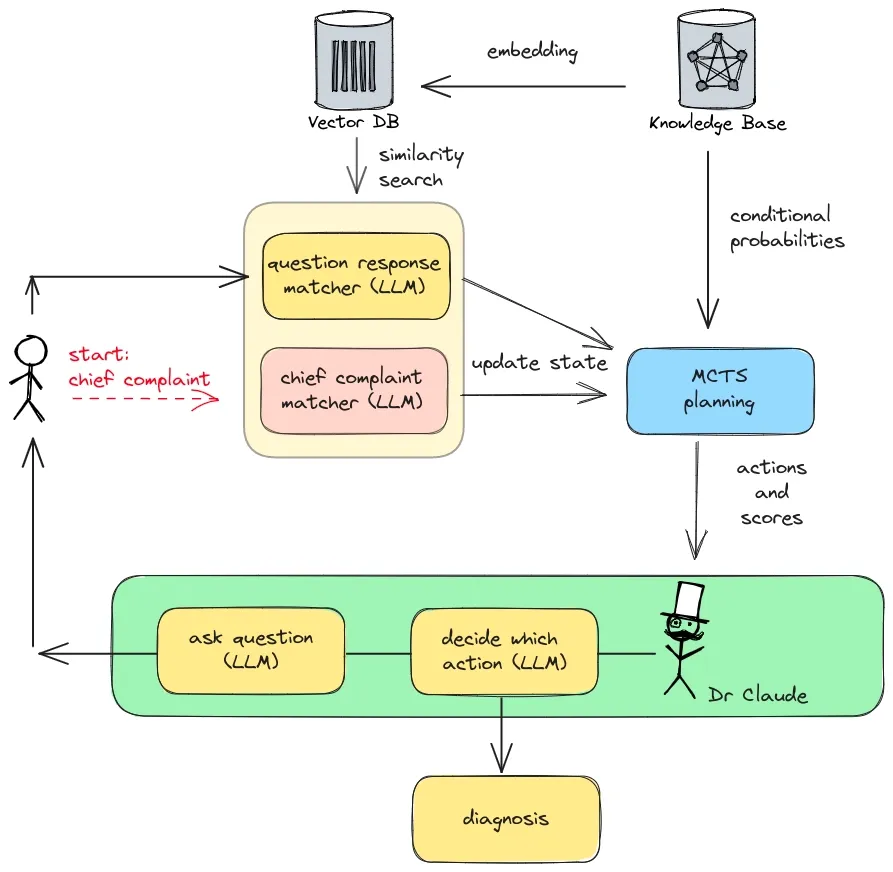
The project employs a FAISS-based retrieval system, which creates embeddings of text data using HuggingFace models. This system indexes these embeddings and retrieves similar entries based on similarity to input text. This functionality could be used to find similar patient cases or medical literature, enhancing the decision-making process.
In a nutshell, this means that doctors can make better decisions, leading to better patient outcomes. It's a shining example of how LangChain can be used as a mediator framework between big data and humans to drive innovation and improve outcomes in critical sectors like healthcare.
Project Links:
Project 2: YouTube Video Q&A - Harnessing the Power of Langchain for Content Analysis

Diving into the vast realm of video content, we encounter the YouTube Video Q&A project, an innovative application that stands as a testament to the transformative potential of LangChain. This open-source project isn't just about using a tool to extract information; it's about revolutionizing the way we interact with video content altogether. One more thing to add is this is a completely open-source project, so feel free to try it out yourself.
How Does The YouTube Video Q&A Project Work?
Imagine watching a YouTube video and wanting to extract specific information from it. The YouTube Video Q&A tool does just that by tapping into the video's audio, essentially "listening" to the video. Once it has the audio, it employs a tool called 'whisper' from OpenAI to transcribe it, converting the spoken words into written text. This transcribed text serves as a script coverage of the video, ready to be explored and queried by the Large Language Model.
What Is The Role Of LangChain?
The brilliance of the project lies in how it uses LangChain to search this transcript. With LangChain, the project can pinpoint specific information within the video's content in seconds. It's like having a super-smart assistant that can instantly find any piece of information from hours of content.
To make this search even more efficient, this project again uses FAISS, which organizes and retrieves the information, ensuring that LangChain can quickly provide answers directly from the video's content.
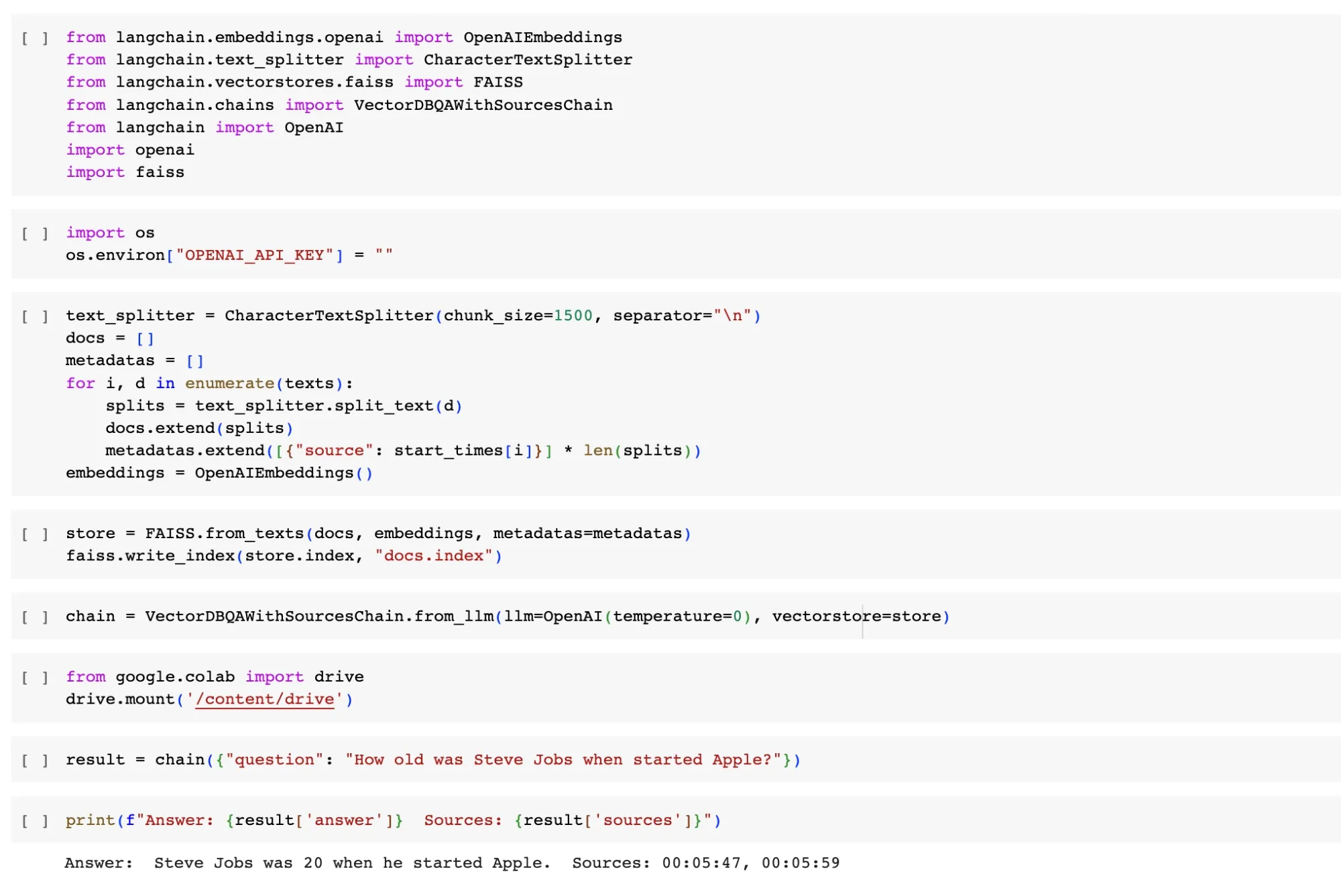
But what truly sets the YouTube Video Q&A project apart is its ability to legitimize its answers. When it provides an answer, it doesn't just give a piece of information; it also returns timestamps from the video as sources. This means users aren't just getting answers; they're getting precise, reliable information with exact references to where in the video it was found.
In essence, the YouTube Video Q&A project showcases how LangChain can make video content as searchable and navigable as a written article. It's a game-changer in the realm of content analysis and information retrieval, demonstrating that with a framework like LangChain, the vast sea of video content on platforms like YouTube can be navigated with unparalleled ease and precision. For anyone looking to extract insights from videos, this project is a shining example of what's possible when technology meets innovation.
Project Links:
Project 3: Summarize Google News Results - Navigating the Information Overload with LangChain

Navigating the vast digital landscape of news can be overwhelming. With the sheer volume of information available, finding concise and relevant content becomes a challenge. Enter the "Summarize Google News Results" project, a beacon of clarity in the age of information overload.
Harnessing the Power of LangChain and Serper API
This innovative application combines the prowess of LangChain with the Serper API, a tool that fetches Google Search results swiftly and cost-effectively to distill complex news stories into concise summaries.
The process begins with a single prompt by the user. Using the Serper API, the application fetches the latest search results relevant to the query. But instead of presenting the user with a list of links and snippets, the application takes it a step further. It dives into each link, retrieves the content, and then uses LangChain to generate a concise summary of the article. The result? Users receive a distilled version of the news, allowing them to grasp the essence of the story without wading through pages of content.

A Glimpse into the Future of News Consumption
The Google News summary project isn't just a tool; it's a vision of the future of news consumption. In an era where time is of the essence, tools like these are reshaping how we consume information with powerful LLMs and prompt templates. By providing concise, relevant, and easily digestible content, this open-source project is paving the way for a more informed and efficient digital age.
Project Links:
Project 4: HR GPT - Transforming Human Resources with Langchain
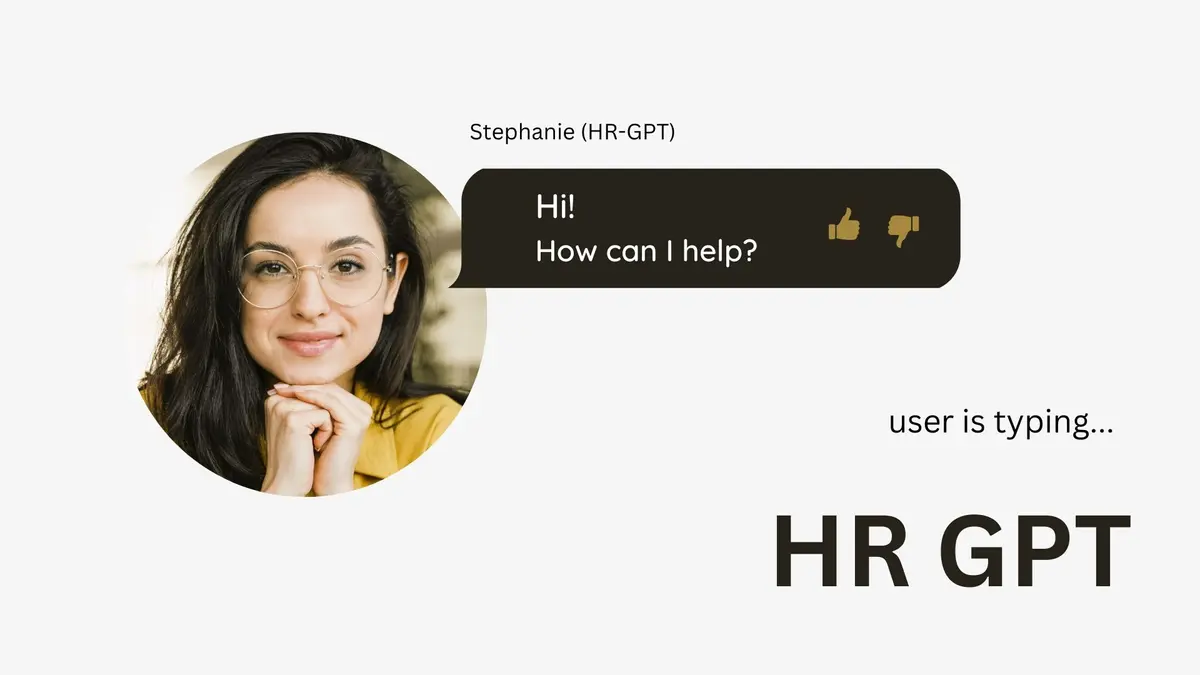
In the ever-evolving landscape of the corporate world, human resources stand as the backbone of an organization. Ensuring smooth onboarding, addressing employee queries, and managing a myriad of other HR tasks is no small feat. Enter the HR GPT project, a revolutionary step towards transforming the HR domain.
How Does HR GPT Work?
Imagine an HR assistant that never sleeps, is always available, and can handle a multitude of tasks without breaking a sweat. That's precisely what the HR GPT project brings to the table. Living within the confines of Slack, this AI HR Agent, powered by GPT, is always at the service of employees, especially new hires. From answering queries to providing support, the agent ensures that the onboarding process is as smooth as possible.
At the heart of the HR GPT project lies LangChain. By harnessing the capabilities of LangChain, LLMChain, and RetrievalQA, the project can efficiently address a wide range of questions without skipping a beat. Whether it's introducing itself, querying the knowledge base, or even calculating stock vesting schedules, the AI HR Agent picks the best tool for the job, ensuring accurate and timely responses.
AI That Continues To Learn The More Its Used
One of the standout features of the HR GPT project is its ability to adapt and evolve. Users can effortlessly update the current knowledge vectorstore. Whether it's by uploading files directly through Slack or pasting URLs using a slash (/) command, the system ensures that the AI HR Agent is always equipped with the latest information. This dynamic nature ensures that the agent remains relevant and updated, catering to the ever-changing needs of the organization.
A Glimpse into the Future
The HR GPT project is not just an innovative tool; it's a vision of the future. A future where AI and humans work hand in hand, where repetitive tasks are automated, and where the HR function is not just about administration but about strategy and growth. With LangChain at its core, the HR GPT project is paving the way for a new era in human resources, one that is efficient, effective, and forward-looking.
Project Links:
Project 5: GPTeam - Exploring the Capabilities of Langchain in Multi-Agent Simulations
Our final stop is GPTeam, a multi-agent simulation that uses GPT-4 to create multiple agents who collaborate to achieve predefined goals. Each agent in GPTeam has its own unique personality, memories, and directives, leading to fascinating emergent behavior as they interact. GPTeam is not just a project; it's a playground for exploring the capabilities of language models to emulate human-like social behavior.
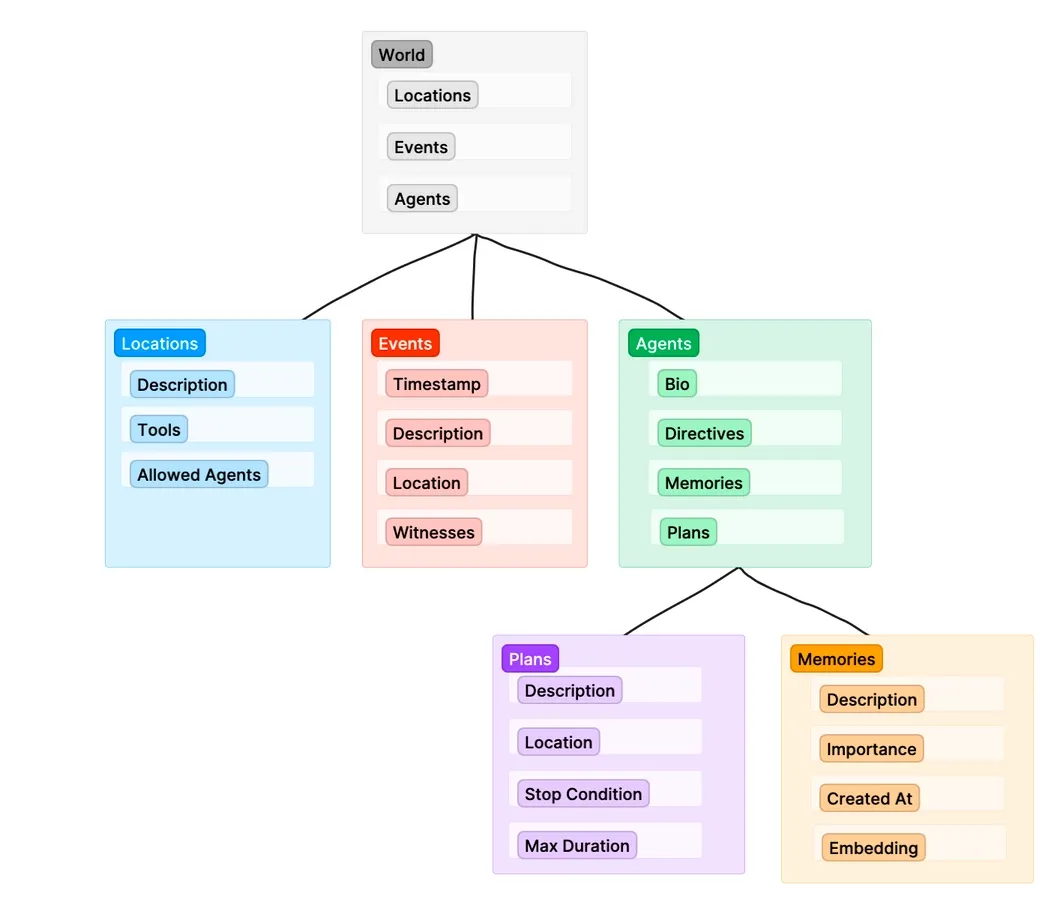
GPTeam is not just another simulation; it's a testament to the prowess of Langchain. By leveraging the capabilities of GPT-4 and Langchain, GPTeam crafts a world where multiple agents work in tandem to achieve predefined goals.
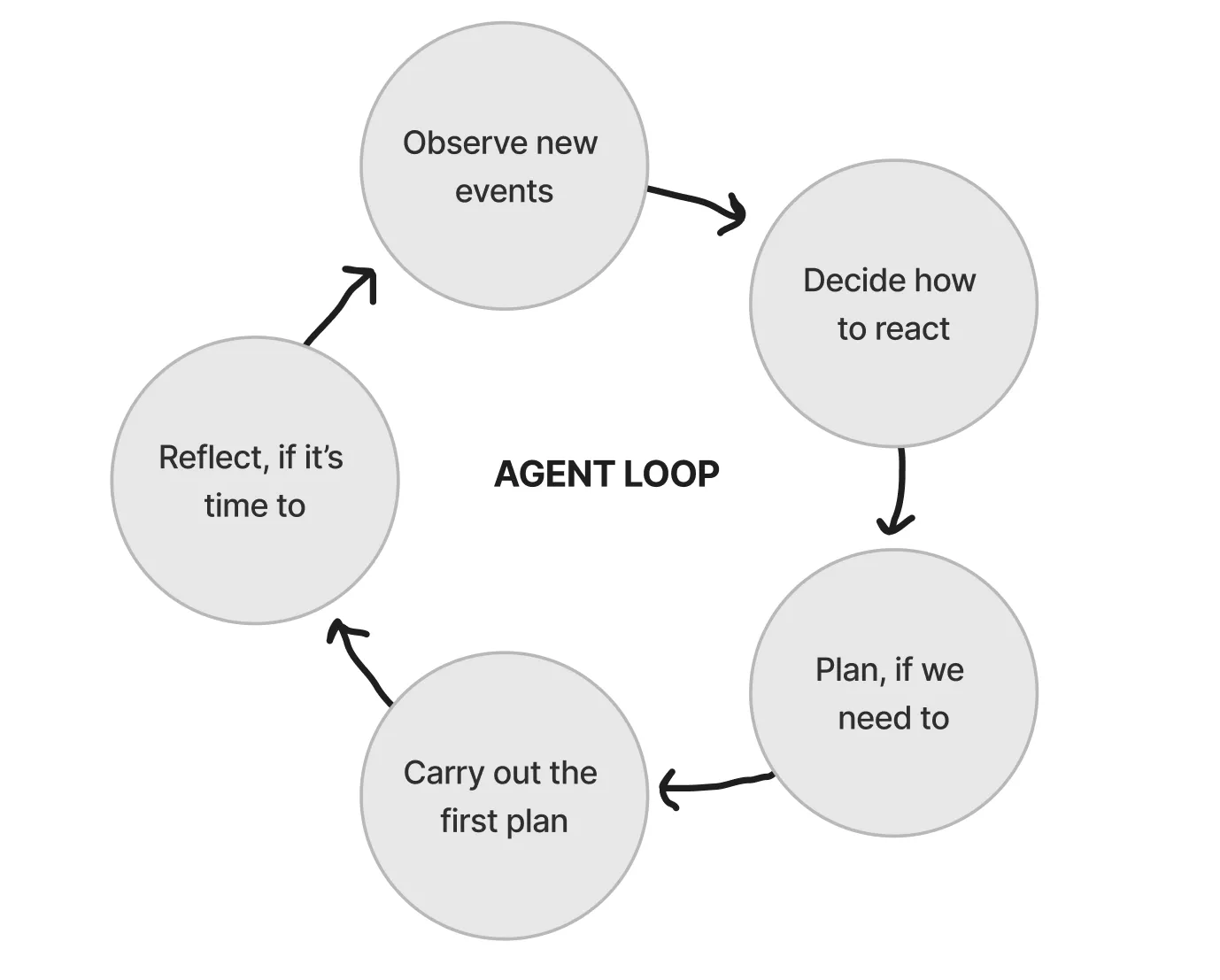
This collaborative approach allows for the decomposition of intricate tasks, distributing them among agents, leading to outcomes that are both efficient and profound. With Langchain as its backbone, GPTeam opens up a realm of possibilities for crafting intricate, interactive simulations (more on that below).
A Deeper Dive into GPTeam's Architecture
The architecture of GPTeam is both intricate and fascinating:
- The World Class: This serves as the overarching framework, orchestrating the activities of all agents. When the simulation is initiated, it's essentially the world that comes alive, setting each agent on its unique path.
- The Agent Loop: This is the heartbeat of every agent in GPTeam. As the world evolves, each agent undergoes a continuous cycle of observation, reaction, action, and reflection. This loop is the essence of their existence, driving their interactions and decisions.
- Agent.observe & Agent.react: Agents begin by observing their surroundings, absorbing events, and updating their memories. Based on these observations, they then decide how to react, whether to continue with their current plan, postpone it, or abandon it altogether.
- Agent.act & The Plan Executor: Once an agent has a plan in place, it's time to act. This involves gathering relevant memories and context, and then executing the plan. The PlanExecutor class, custom-built for GPTeam, wraps around Langchain's LLMSingleActionAgent, ensuring that every action is in line with the agent's objectives and directives.
- Agent.reflect: After all actions are taken, agents indulge in a moment of reflection, analyzing their memories, and drawing insights. This process, inspired by the "Generative Agents" paper, ensures that agents evolve and adapt based on their experiences.
GPTeam in Action: Results & Implications
When set in motion, GPTeam unveils a world of intricate social behaviors. Agents coordinate, converse, and collaborate, showcasing a level of sophistication that's eerily reminiscent of human interactions. Whether it's an improv performance at the park or a surprise birthday setup, the agents of GPTeam navigate these scenarios with finesse and intelligence.
However, the true potential of GPTeam lies beyond these simulations. Imagine a world where video games are populated by AI agents that interact organically, forging genuine emotional connections with players. Or consider a scenario where multi-agent systems are deployed in real-world settings, collaborating to solve complex challenges.
The Road Ahead
While GPTeam stands as a monumental achievement, it's just the beginning. There are avenues to explore, from speeding up the simulations and enhancing the user interface to incorporating more interactive elements. The vision is to make GPTeam not just a simulation but an immersive experience accessible to both technical and non-technical audiences.
Project Links:
Bonus Project: HelpHub - A GPT-Powered Chatbot For Any Site

HelpHub is an interface for assisting users in-app. It combines the best of “mainstream” user help — help docs and human-authored FAQs — with AI chat, to give any website an AI-powered chatbot.
At CommandBar, we think AI is about to change software interfaces in a big way. Both changing the way interfaces are built and creating step-change opportunities to assist users in personalized ways that were previously impractical. HelpHub is our first step in that direction.
Here’s a high-level overview of how it works:
Initially, we use a Chat Model to process user inputs and generate appropriate responses. In the event that HelpHub encounters a complex question, it calls upon GPT to generate a more nuanced response. We also use LangChain's StuffDocumentsChain to upload and convert the user's input (for example, their Help Docs, support resources, SOPs, etc) into a numerical format, which is stored in a Vector Database. When the chatbot needs to retrieve relevant information, it uses ElasticSearch to scan the database and find the correct answer efficiently.
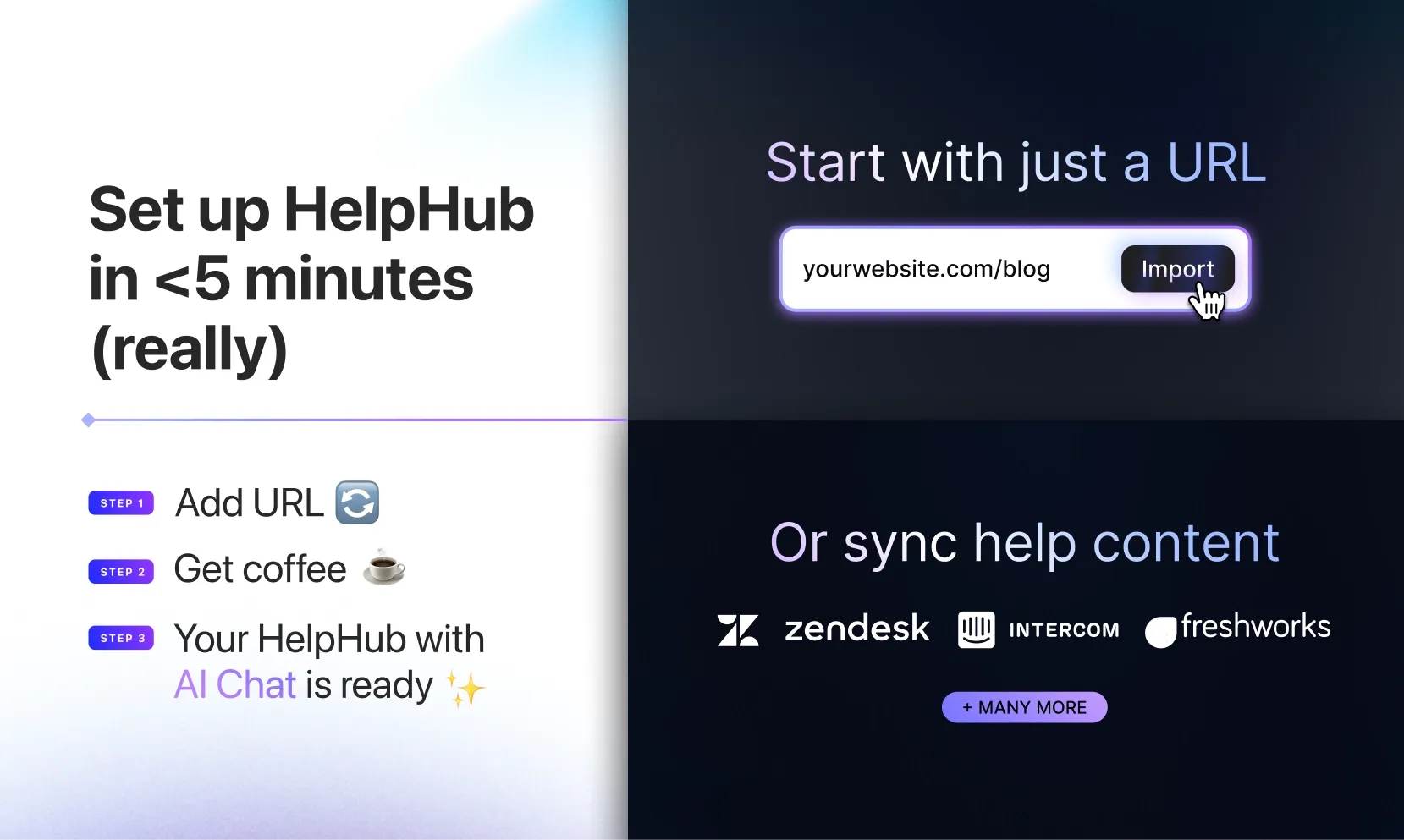
The Future Of LangChain in Onboarding and User-Assistance
We started CommandBar 3 years ago with the goal of creating a natural language interface for the internet, to help users wield software. We started with the eponymous command bar and have added pieces to the platform since (like nudges and questlists a few months ago).
Launching HelpHub is perhaps the best expression of our original vision that we’ve built today.
Project Links:
- Try HelpHub here and you’ll see this live in action!
The Diverse Applications and Immense Potential of LangChain
From revolutionizing healthcare to transforming the way we consume news, these five projects showcase the diverse range of applications and the immense potential of the Langchain framework - without it, these projects wouldn't exist. They are a testament to the power of innovation and a glimpse into a future where Large Language Models are an integral part of our digital landscape.
So, whether you're a developer building applications, a tech enthusiast, or a curious reader, we encourage you to explore LangChain. Consider how it could be applied to your own projects or businesses. The future is bright, and the potential of this amazing framework is immense. As we continue to explore and harness the power of LangChain, one thing is certain: the best is yet to come.
Bonus Projects
We couldn't dig into everything, but still wanted to shout out some awesome projects that are built with LangChain:
- Spoke – a summarization product
There are also some additional projects and tools that pair well with LangChain, just like milk tea and boba:
Useful LangChain Resources
For those looking to get even deeper into LangChain, we are dropping some of our favorite resources below:
- Our overview for product people and non-technical readers (by CommandBar)
- Our LangSmith overview (by CommandBar)
- LangChain's quickstart guide (by LangChain)
- A deepdive handbook from PineCone (by the PineCone team)
- Combining LangChain and Weaviate (by Weaviate's Erika Cardenas)
- Classifying web content (by Rowy)
- The history of LLMs (by SnorkelAI's Matt Casey)
- Building a conversational ChatBot with LangChain, OpenAI, and DynamoDB (by antstack's Pradhyumna N Holla)
- A simple getting started guide (by ChatGen's Prasanth Sai)
- An exploration of LangChain's capabilities (by WalkingTree's Abhilasha Sinha)
- How to build a great AI product (by Statsig's Skye Scofield)
- Building a PDF knowledge bot with open-source LLMs (by Shakudo's Sabrina Aquino, Sai Kalyan Siddanatham)
- Using LangChain for data analysis (by Bluebash's Divyanshu Dubey)
- Using LangChain to call different endpoints based on the use case (by Jettro Coenradie)















